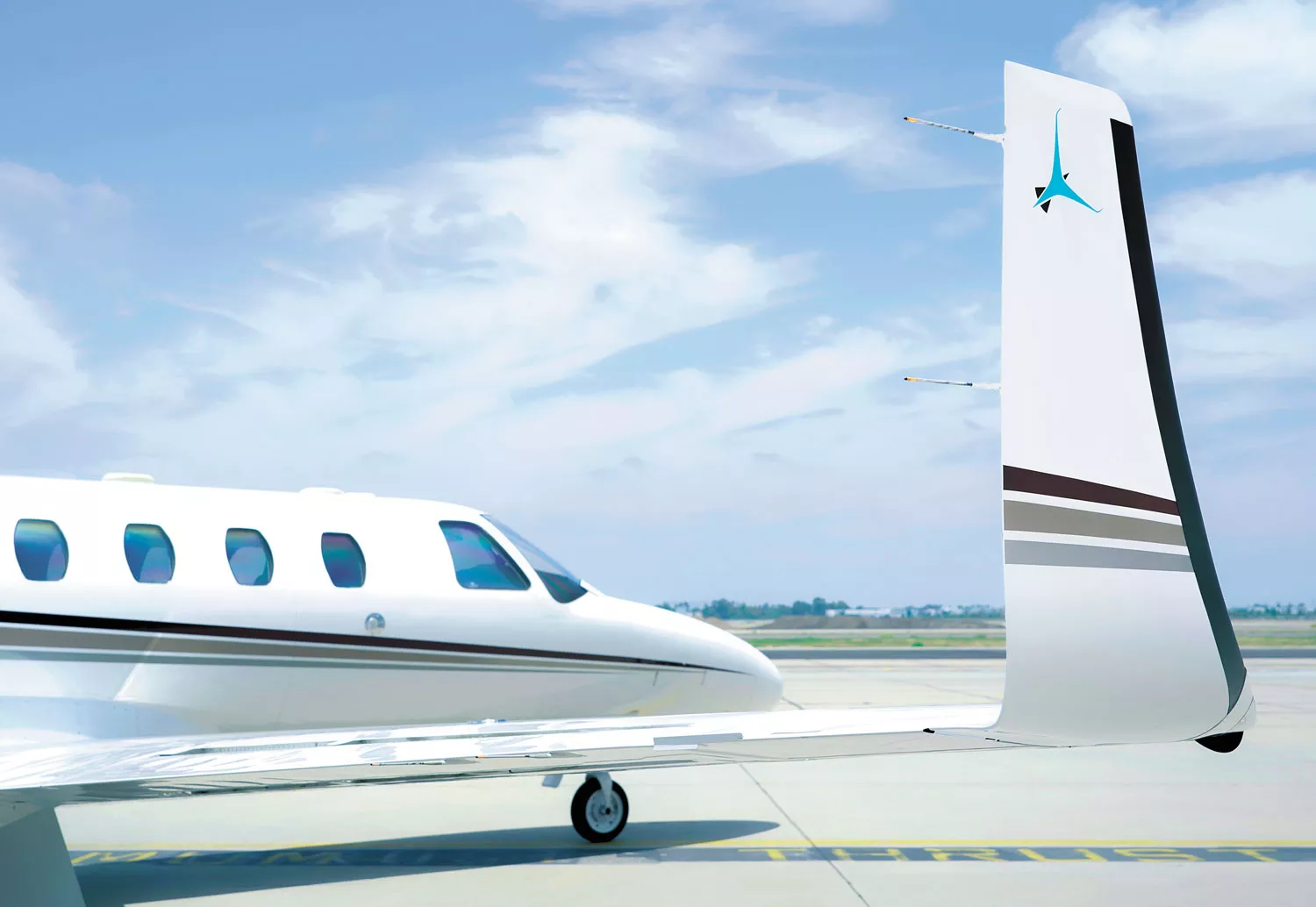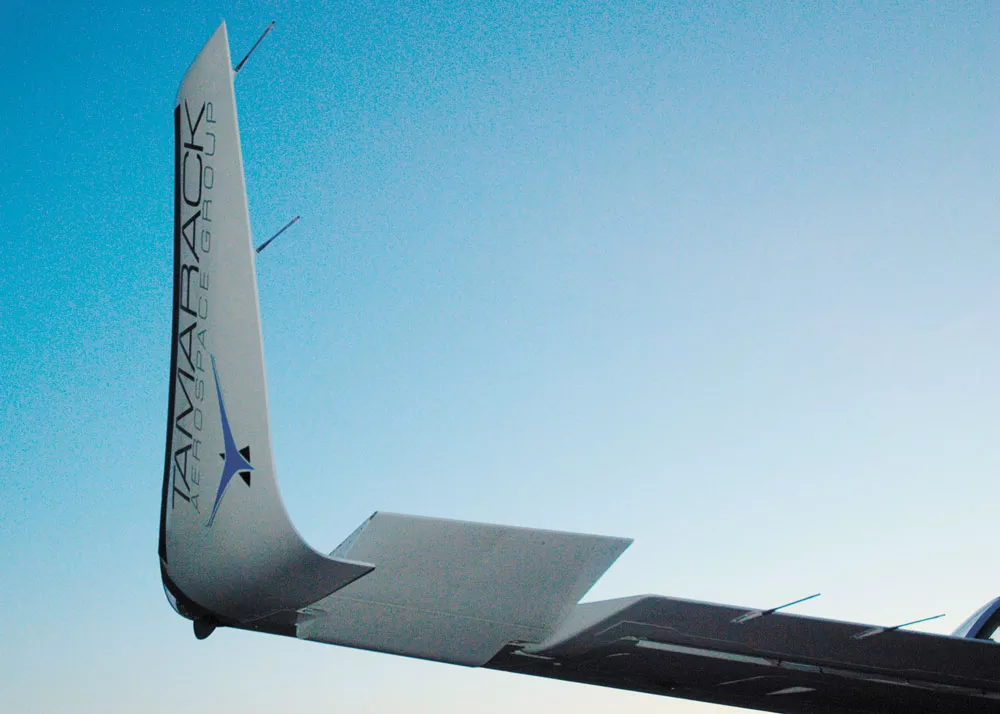
[ad_1]
With a novel coronavirus spreading rapidly in America, flying by private charter has become more popular, but there’s a high environmental cost to flying.
In 2018, global aviation accounted for enough greenhouse gas emissions that if the industry were a country, it would be the sixth largest emitter of carbon dioxide, according to the Environmental Energy and Study Institute. Those emissions are also growing at an alarming pace, already 70 percent higher this year than they were in 2005.
While sustainable airplane modifications are on the horizon for larger aircraft, including more environmentally friendly alternative fuels and even electric propulsion, Sandpoint-based Tamarack Aerospace Group has patented technology that is already being used to save private jet owners on fuel and emissions in a major way.
Over the last decade or so, Tamarack engineers have designed and perfected “active winglets” that can save about 25 percent on fuel by reducing drag on the wings by about the same amount.
People who’ve flown on Southwest Airlines will likely recognize a winglet as the piece at the end of a wing tip that typically points upward, explains Tamarack President Jacob Klinginsmith. The piece is meant to counteract some of the physics of flying.
“When the wing is creating lift, it also creates drag, creating a vortex where the air wants to go from the bottom of the wing to the top,” Klinginsmith says. “The winglet slows that drag, and helps save fuel.”
Winglets themselves aren’t new. Klinginsmith explains that, in fact, the technology has been known for about a century. But it was only during the fuel crisis of the 1970s that major airlines started installing them on aircraft.
Here’s where Tamarack’s technology gets interesting. Those traditional winglets reduce drag by about 4 percent or 5 percent, saving about the same in fuel costs, he says.
But Tamarack’s active winglets also include a wing extension that can move a connected flap in a fraction of a second to react to weather conditions and reduce different stress on the wing.
Because of that extra active piece, wings don’t have to be reinforced with heavier components like with traditional winglets, Klinginsmith says.
The lighter parts and responsive wing extension have resulted in up to 33 percent less drag for some of the 100 business jets Tamarack has upgraded, while making for a smoother ride, he says.
Tamarack Aerospace Group photo
The wing extension can move a connected flap in a fraction of a second to react to weather conditions and reduce different stress on the wing.
MANY APPLICATIONS
An easy way to think of it, Klinginsmith says, is like holding a heavy weight. It’s easier to hold that closer to your body than farther away.
The moving wing extension that’s partnered with Tamarack’s winglet acts kind of like someone coming and helping push up your hands that are holding that weight. It makes for overall lighter planes with much more fuel efficiency.
“If you’re always going to be flying between a city pair,” Klinginsmith says, “the modification pays for itself in fuel savings.”
While the patented plane modification still has another year or two to go before it can be certified by the Federal Aviation Administration for commercial airliners, Klinginsmith says it’s already helping some private jet owners see massive savings.
“One of my favorite stories is a customer who has a business in Carlsbad, California, and a home in Bozeman, Montana, so he goes back and forth all the time between those two locations,” Klinginsmith says. “He knows how much fuel he usually burns for that trip, and his first trip with the active winglets, he saved 700 pounds of fuel.”
Some quick math translates that’s more than $300 in savings just one way.
“The environmental aspect is really important, too,” he says. “It’s the biggest modification someone can do to an aircraft right now to make an impact.”
Not only does the modification decrease drag and fuel usage, it also makes it easier to climb to higher altitudes.
All of that combined means the technology could have some military applications as well, he says. The technology makes it easier to climb through thin air in hot or high areas and expands the potential flight time for planes that might otherwise have to remain grounded.
“We’re taking a 10-hour airplane and making it a 13- or 14-hour airplane,” Klinginsmith says. “It almost changes the business model, because you have to talk about different crew accommodations, because you’ll be in the air so much longer.”
With private charters, say, on the East Coast, there may be some opportunities to prevent stops to refuel midway between the northern coast and the south, he says.
“There’s a lot of trips between New York and Florida, for example. The customers who have the Citation jets we offer winglets for, they can’t make that trip without stopping,” Klinginsmith says. “Unless they put the winglets on. Then they can make the full trip without stopping.”
That not only saves on fuel, but time. Customers may not enjoy the inconvenience of stopping midway, and it also reduces the amount of time hired pilots need to remain on the clock, he says.
“The pandemic has definitely increased charter aircraft demand. People are looking for ways to get around if they need to without being around such big crowds,” he says. “There’s a lot of opportunity there.” ♦
[ad_2]
Source link

